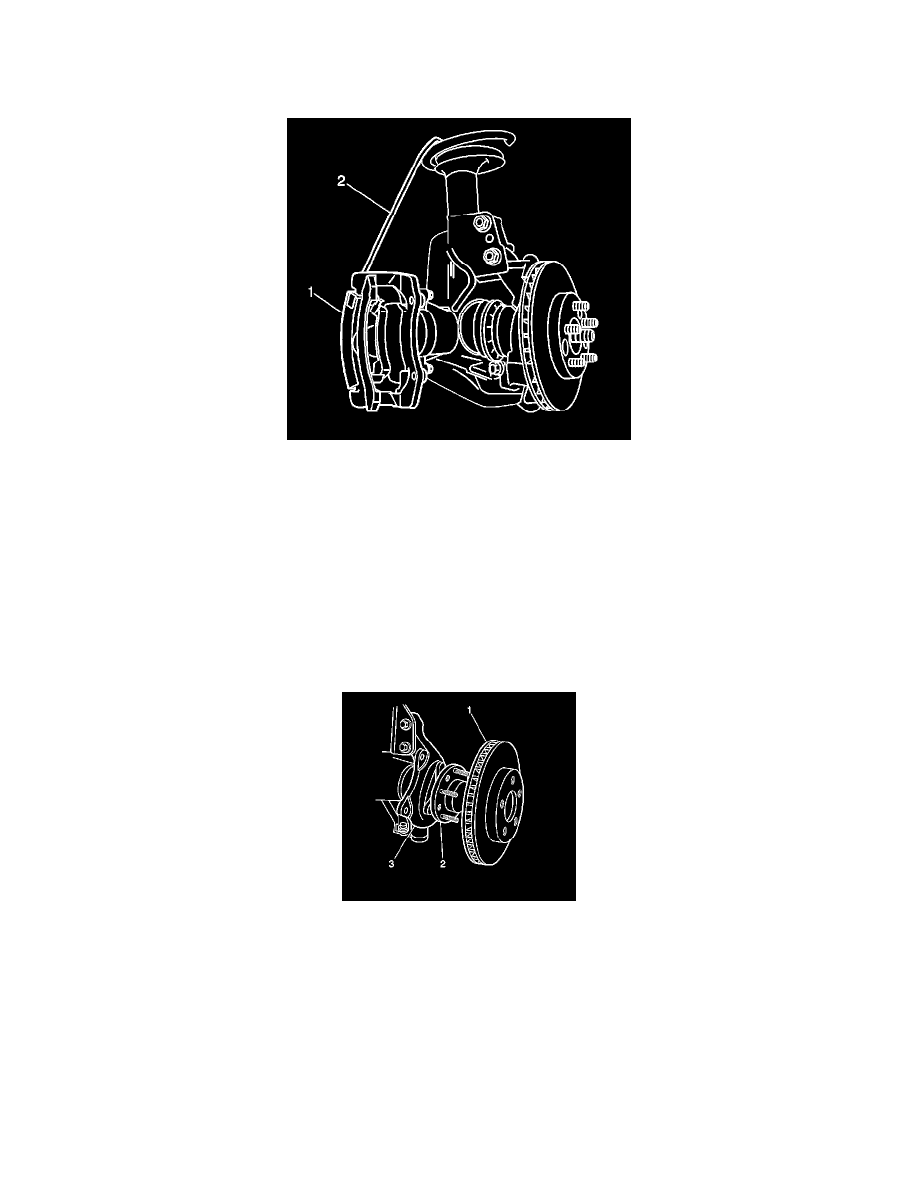G6 V6-3.9L (2009)

).
3. Install a C-clamp over the body of the brake caliper, with the C-clamp ends against the rear of the caliper body and the outboard disc brake pad.
4. Tighten the C-clamp until the caliper piston is compressed into the caliper bore enough to allow the caliper to slide past the brake rotor.
5. Remove the C-clamp.
Caution: Support the brake caliper with heavy mechanic wire, or equivalent, whenever it is separated from its mount and the hydraulic flexible
brake hose is still connected. Failure to support the caliper in this manner will cause the flexible brake hose to bear the weight of the caliper, which
may cause damage to the brake hose and in turn may cause a brake fluid leak.
Note: Do NOT disconnect the hydraulic brake flexible hose from the caliper.
6. Remove the brake caliper and the caliper mounting bracket (1) as an assembly from the steering knuckle and support the assembly with heavy
mechanic's wire (2), or equivalent. Ensure that there is no tension on the hydraulic brake flexible hose. Refer to Front Brake Caliper Bracket
Replacement (See: Brake Caliper/Service and Repair/Removal and Replacement/Front Brake Caliper Bracket Replacement).
7. Matchmark the position of the brake rotor to the wheel studs.
8. Remove the brake rotor.
Installation Procedure
Note: Whenever the brake rotor has been separated from the hub/axle flange, any rust or contaminants should be cleaned from the hub/axle flange
and the brake rotor mating surfaces. Failure to do this may result in excessive assembled lateral runout (LRO) of the brake rotor, which could lead
to brake pulsation.
1. Using the J 42450-A , thoroughly clean any rust or corrosion from the mating surface of the hub/axle flange.
2. Using the J 41013 , thoroughly clean any rust or corrosion from the mating surface and mounting surface of the brake rotor.
3. Inspect the mating surfaces of the hub/axle flange and the rotor to ensure that there are no foreign particles or debris remaining.
4. Install the brake rotor (1) to the hub/axle flange (2). Use the matchmark made prior to removal for proper orientation to the flange.
5. If the brake rotor was removed and installed as part of a brake system repair, measure the assembled LRO of the brake rotor to ensure optimum
performance of the disc brakes. Refer to Brake Rotor Assembled Lateral Runout Measurement (See: Testing and Inspection/Brake Rotor
Assembled Lateral Runout Measurement).
6. If the brake rotor assembled LRO measurement exceeds the specification, bring the LRO to within specifications. Refer to Brake Rotor Assembled
Lateral Runout Correction (See: Testing and Inspection/Brake Rotor Assembled Lateral Runout Correction).
